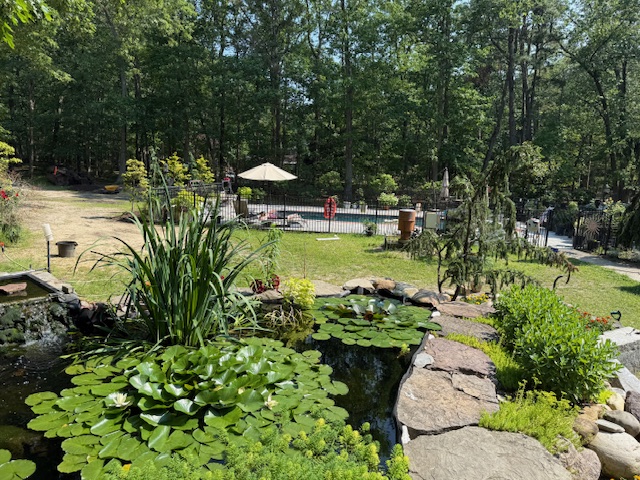
Environmental Sustainability
A bog filter system is considered environmentally sustainable for several reasons. Here’s a breakdown of its key sustainable features:
1. Natural Filtration Process
Biological Filtration: Bog filters rely on natural biological processes to purify water. Beneficial bacteria convert harmful ammonia from fish waste into less harmful nitrates, which plants then absorb. This reduces the need for chemical treatments, promoting a healthier ecosystem.
2. Reduction of Chemical Use
Eco-Friendly Approach: By effectively managing nutrients and maintaining water quality, bog filters minimize the need for chemical additives such as algaecides and clarifiers. This reduces the risk of chemical runoff into surrounding environments, protecting local ecosystems.
3. Support for Biodiversity
Habitat Creation: The plants and microorganisms in a bog filter create a habitat for various species, including beneficial insects, amphibians, and birds. This promotes biodiversity and contributes to a balanced ecosystem.
4. Water Conservation
Efficient Water Use: Bog filters help maintain water quality, reducing the need for frequent water changes. This conserves water and minimizes waste, making it a more sustainable option for pond management.
5. Carbon Sequestration
Plant Growth: The plants in a bog filter absorb carbon dioxide during photosynthesis, helping to sequester carbon and mitigate climate change. This contributes to a healthier atmosphere and supports global efforts to reduce greenhouse gases.
6. Mimics Natural Wetlands
Ecosystem Functionality: Bog filters mimic the functions of natural wetlands, which are known for their ability to filter pollutants, absorb excess nutrients, and provide habitat for wildlife. By replicating these processes, bog filters contribute to the restoration and preservation of natural ecosystems.
7. Low Maintenance and Resource Use
Sustainable Design: Once established, bog filters require minimal maintenance compared to traditional mechanical filtration systems. This reduces the need for energy-intensive equipment and labor, making it a more sustainable choice for pond owners
8. Soil and Water Health
Nutrient Cycling: The interaction between plants, bacteria, and water in a bog filter promotes nutrient cycling, which enhances soil health and water quality. This is beneficial not only for the pond but also for the surrounding environment.
Summary
In summary, bog filters are environmentally sustainable because they utilize natural processes for water purification, reduce chemical use, support biodiversity, conserve water, and mimic the functions of natural wetlands. Their low-maintenance design and ability to enhance soil and water health further contribute to their sustainability, making them an excellent choice for eco-conscious pond owners.
